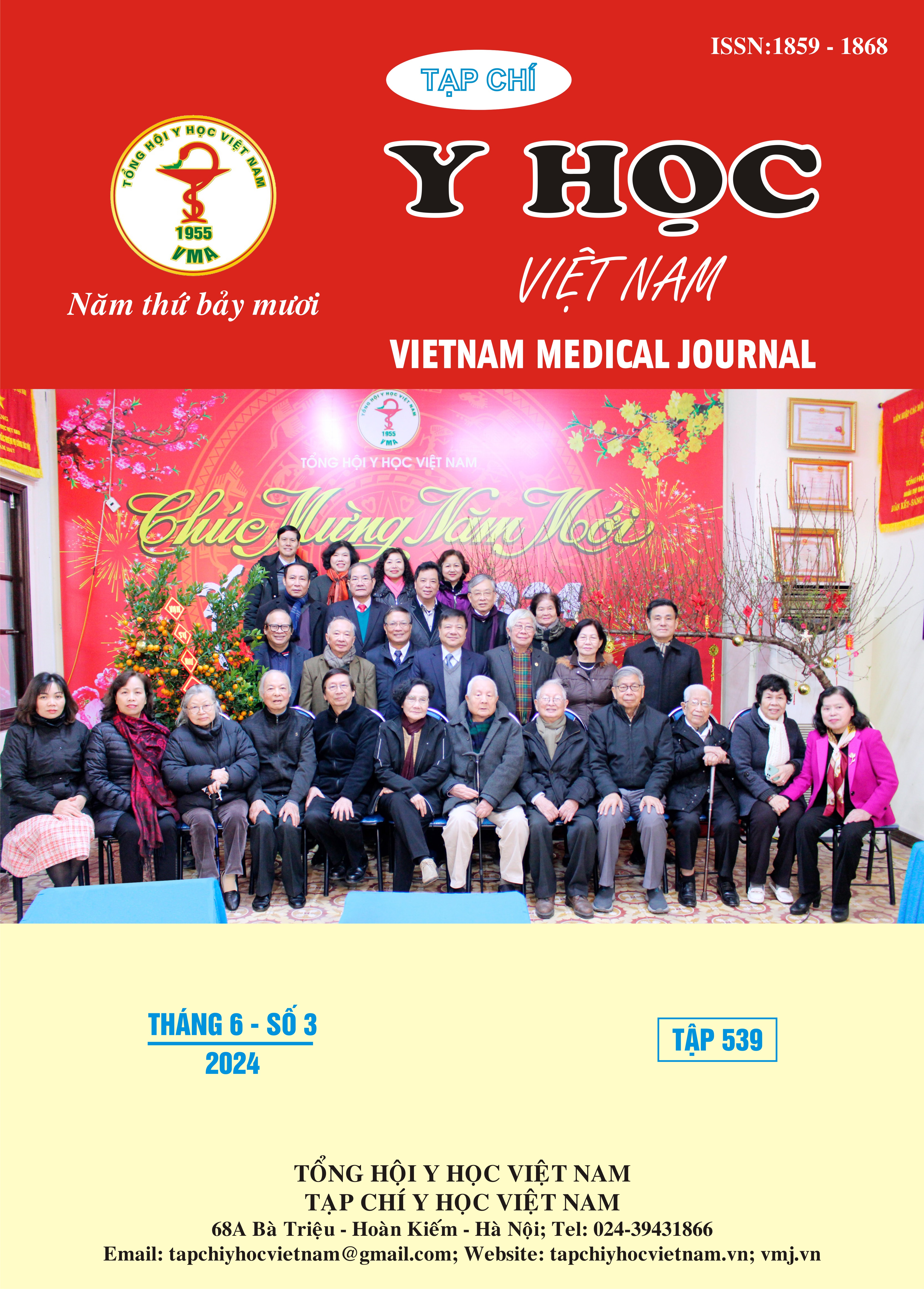UPSIDE-DOWN KIDNEY TRANSPLANTATION: FACILITATING VESSELS ANASTOMOSIS IN CHALLENGING CASES
Main Article Content
Abstract
Objective: Describing clinical characteristics, surgical techniques in cases with complex arterial anastomosis. Materials and methods: We conducted a descriptive retrospective study on patients who underwent living donor kidney transplantation using upside-down kidney position technique from September 2023 to February 2024 at Viet Duc Hospital. Results: Out of a total of 105 patients, two cases (1.9%) underwent upside-down kidney transplantation. Patient 1 received a right kidney and had an anatomical mismatch between the length of the vein and artery due to a short vein and early branching artery (short common trunk but long arterial branches). The kidney was placed in an inverted position to bring the arterial anastomosis to the peripheral side, avoiding kinking. Patient 2 also received a right kidney and had atherosclerosis at the proximal end of the external iliac artery, which was not favorable for arterial anastomosis. The kidney was placed in an inverted position to bring the arterial anastomosis to the peripheral side, avoiding atherosclerosis site. The operation time were 3.5 hours and 4 hours respectively. Both patients had a uneventful postoperative course without complications and were discharged after two weeks. Conclusion: Upside-down kidney transplantation is a safe technique, increasing the suitable selection of anastomotic sites for arterial anastomosis in some complex cases.
Article Details
Keywords
kidney transplantation, inverted positioning, upside-down kidney transplantation
References
2. Tantisattamo E, Maggiore U, Piccoli GB. History of kidney transplantation: a journey of progression and evolution for success. J Nephrol. 2022;35(7):1783-1786. doi:10.1007/s40620-022-01453-3
3. Klatte T, Ficarra V, Gratzke C, et al. A Literature Review of Renal Surgical Anatomy and Surgical Strategies for Partial Nephrectomy. Eur Urol. 2015;68(6): 980-992. doi:10.1016/j.eururo. 2015.04.010
4. Turk IA, Deger S, Davis JW, et al. Laparoscopic live donor right nephrectomy: a new technique with preservation of vascular length. J Urol. 2002;167(2 Pt 1):630-633. doi:10.1016/ S0022-5347(01)69100-6
5. Nitta K, Ogawa T. Vascular calcification in end-stage renal disease patients. Contrib Nephrol. 2015;185:156-167. doi:10.1159/000380980
6. Babiker A, Jeudy J, Kligerman S, Khambaty M, Shah A, Bagchi S. Risk of Cardiovascular Disease Due to Chronic Hepatitis C Infection: A Review. J Clin Transl Hepatol. 2017;5(4):343-362. doi:10.14218/JCTH.2017.00021
7. Garcia LE, González J, Serena G, Ciancio G. Arterial reconstruction with donor iliac vessels during kidney transplantation in a patient with severe atherosclerosis. J Vasc Surg Cases Innov Tech. 2019;5(4): 443-446. doi:10.1016/j.jvscit. 2019.06.002
8. Wakita T, Tsutahara K, Miki A, et al. Upside-Down Kidney Transplantation in a Recipient with Severe Arteriosclerosis: A Case Report. Transplantation Proceedings. 2023;55(4):1059-1061. doi: 10.1016/j.transproceed.2023.03.015


